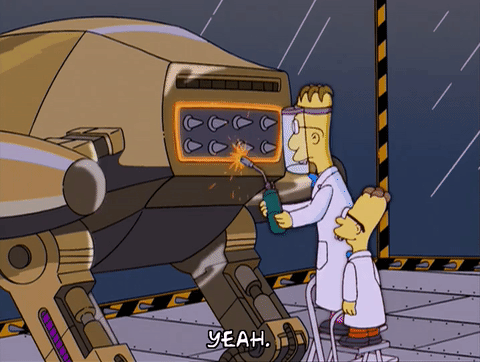I'm going to talk about something so obscure, so obtuse, so arcane, that you will wonder why I'm writing about it. But it pops up on figure skating groups on Facebook, on skating forums, and it deserves some explanation.
If you have your skates handy, pick one up and look at the blade. Or you can look at the picture below. Behind the drop pick (or drag pick) you'll notice a short section of the blade that is flat, that is, it's never been sharpened. And then you'll see where the sharpening begins. Although this doesn't have an official name (you'll see why later), I see it referred to as "The Dead Zone" in numerous places.
I've seen this pop up in questions or comments that go like this:
"OMG" (insert excited voice here) "I don't think my sharpener is doing a good job! He doesn't sharpen my blades all the way to the toepick. There's this DEAD ZONE where the sharpening ends and the toepick begins. How do I find a new sharpener! He's the best locally but he doesn't do the whole blade!"
Let's talk about how the Dead Zone is created during the sharpening process.
Below you see a shot of a skate mounted on the sharpening machine. The pink wheel is the grinding wheel. The skate blade is screwed into the carriage. In the last shot, you'll see how toepick touching the wheel (for visualization) and then a gap (the DEAD ZONE) and finally the grinding wheel touches the blade further back.
When the blade is spinning the toe pick doesn't touch the wheel. This is just a visual to get you to understand the set up
 |
| These are not my skates. DEAR GOD what are those holes in the side of the boots?! |
Here's a close up of the Dead Zone
 |
| My sharpener and I have "differences" on whether it's a "drag pick" or a "drop pick". |
Now, does the Dead Zone matter?
I once had a skate tech that sharpened for USFS at the Olympics, that sharpened for both Johnny Weir and Evan Lysacek, plus many other Olympic skaters. When I asked him about the Dead Zone--actually I just said, "what's this part of the blade that's not sharpened?", he took my boot, put the drop pick on the counter and rolled the skate blade so it rested on the counter at the same time.
"See that?" he said "If you're skating in this unsharpened area, you'll be flat on your face pretty quick. You can't skate in that area,"
So, probably, it's not (much of) an issue (probably)
However, a coach reports it can interfere with
entering spins and toe assisted jump take offs.
Now we're cooking with gas because now I have to institute a test program.
 Whether it makes a difference to skates being sharpened for Compulsory
Figures? I don't know. There used to be a completely different
sharpening process for them that is lost to time....
Whether it makes a difference to skates being sharpened for Compulsory
Figures? I don't know. There used to be a completely different
sharpening process for them that is lost to time....

A pick by any other name would drag as sweetly.
ReplyDeleteFrom its dropped position.
DeleteYeah, there’s controversy over the dead zone (also known as the non-skating zone). The usual demonstration has the blade placed on a hard surface, such as a tabletop. The blade is rocked forward until the drag pick touches the hard surface, but doesn’t dig into the hard surface. On the ice, though, the drag pick does dig into the ice somewhat, and the blade can rock forward more than it does on the tabletop demo. Some skaters enter a scratch spin by rocking forward enough to lift the sweet spot off the ice, and then rocking backward to plant the sweet spot on the ice.
ReplyDeleteAlso, I know a high-level ice dancer who likes the dead zone sharpened. Her skate tech doesn’t do it for the reason you’ve described. But I hand-hone the edges there for her so the edges are sharp, even though there’s not much of a hollow. She’s a lot happier that way.